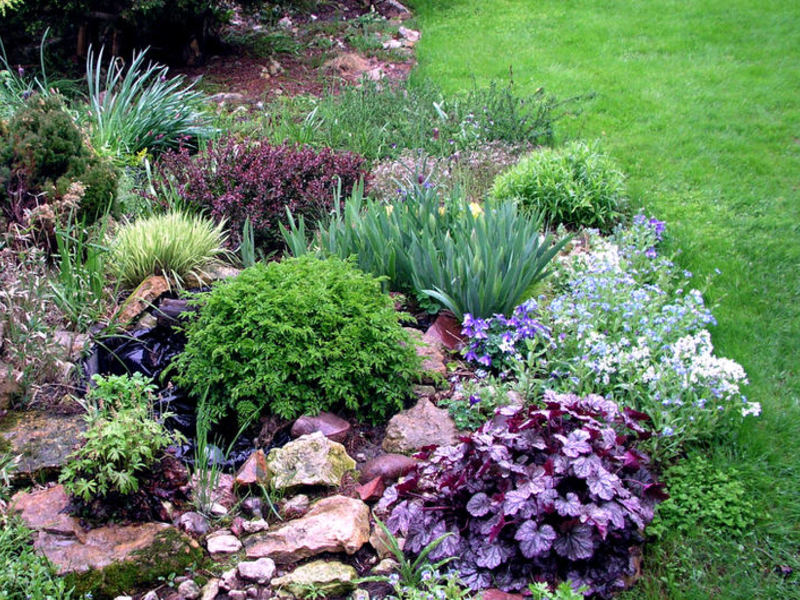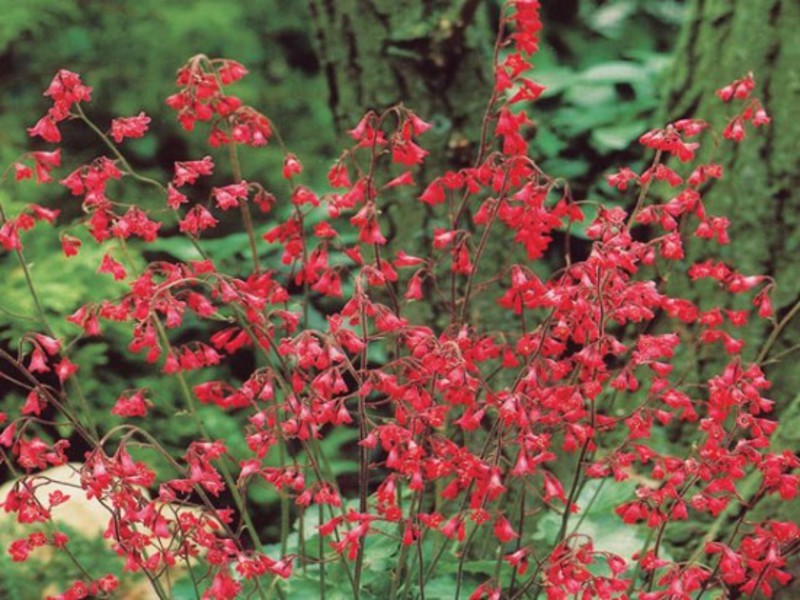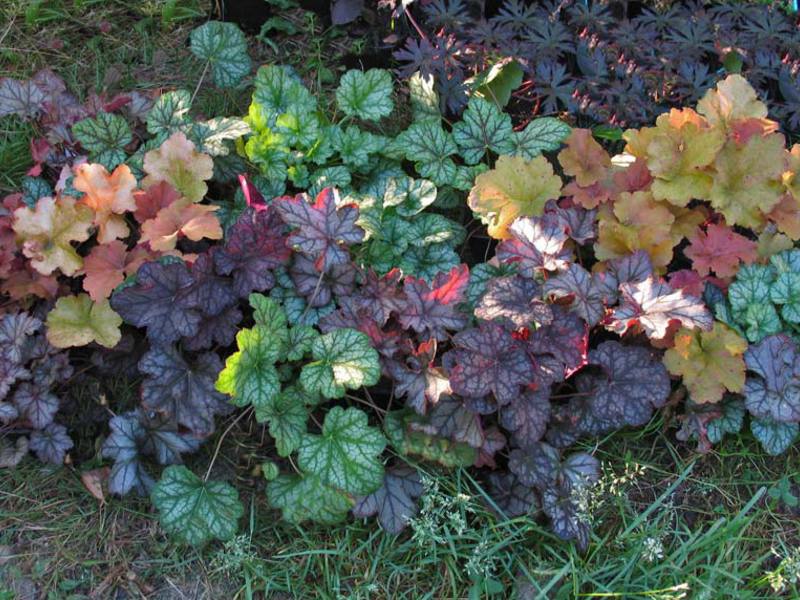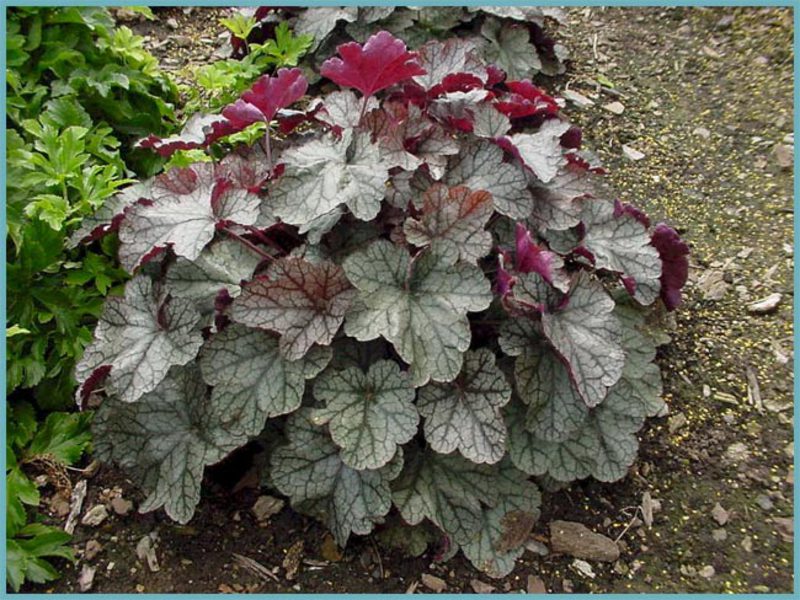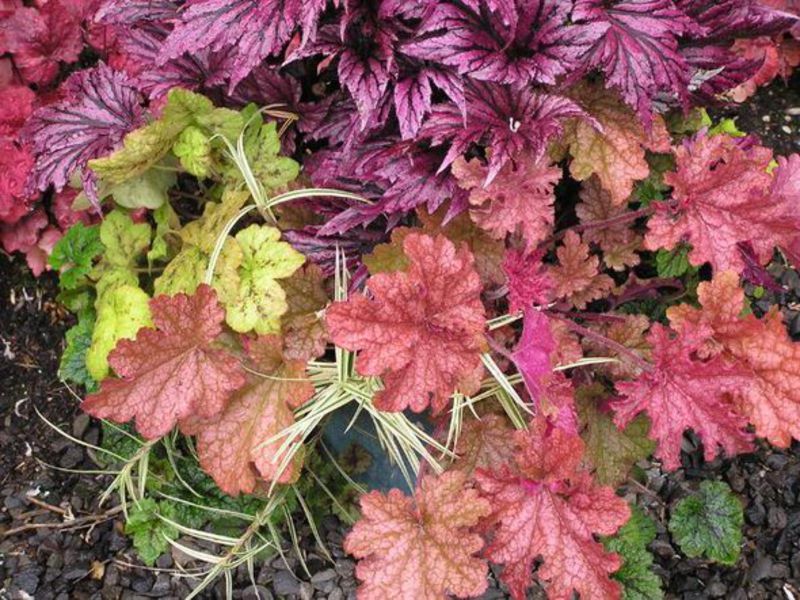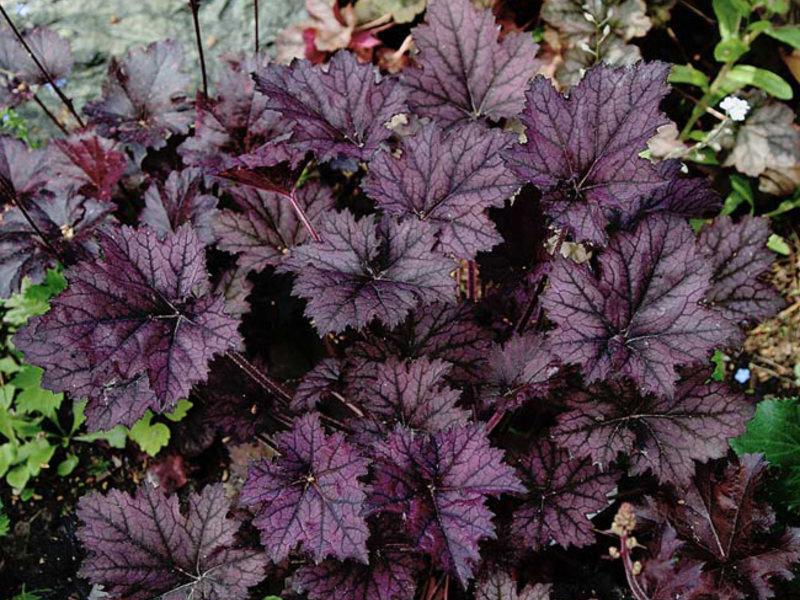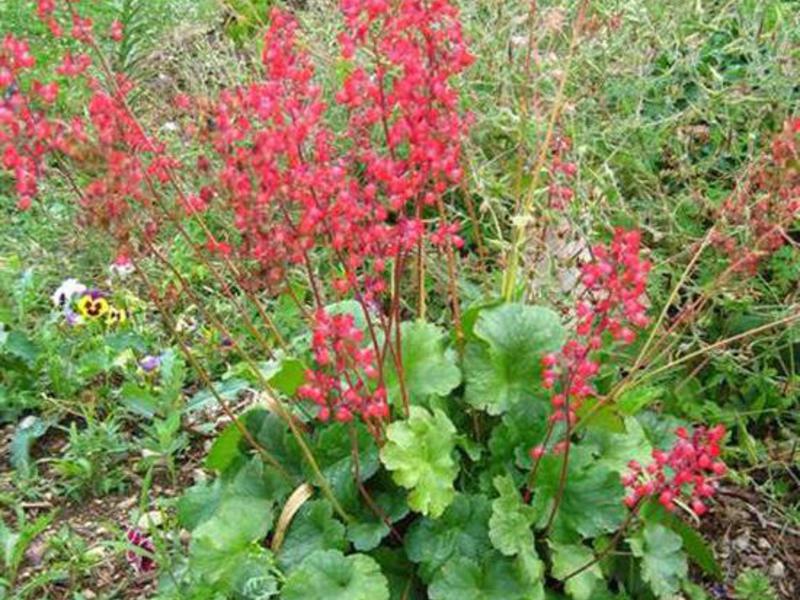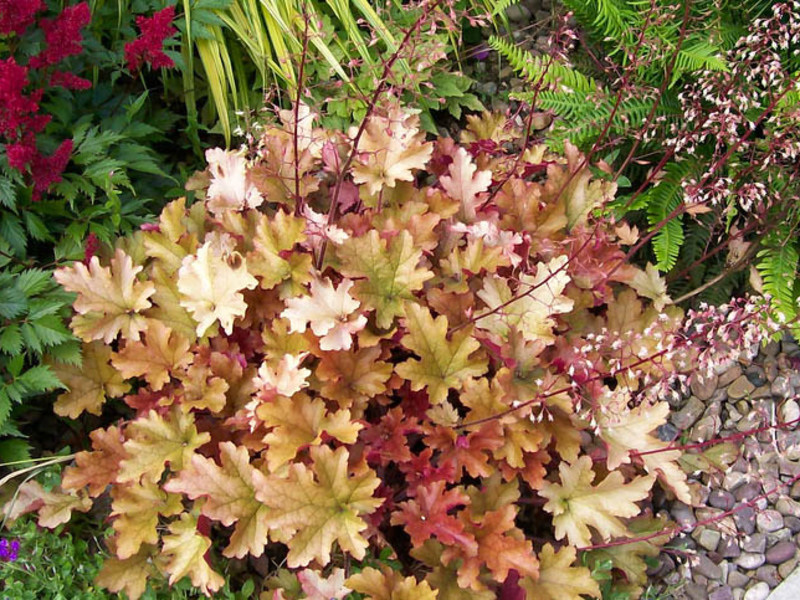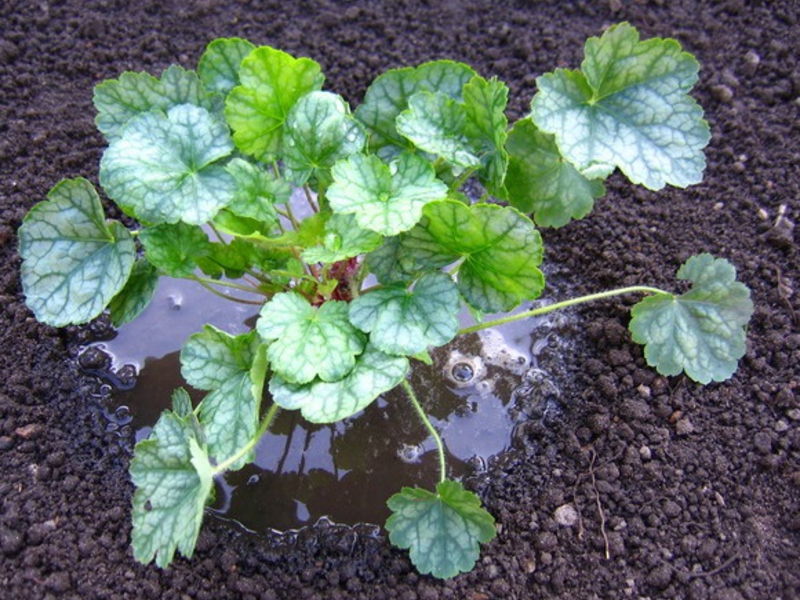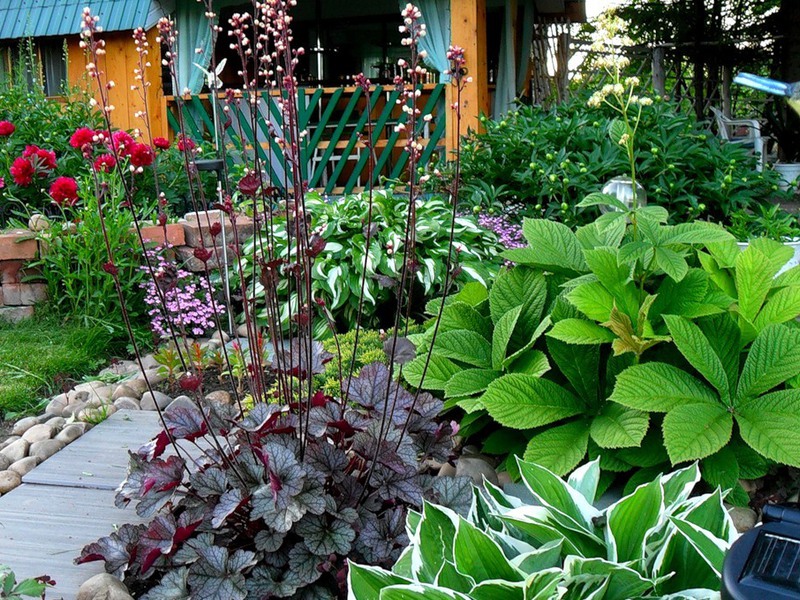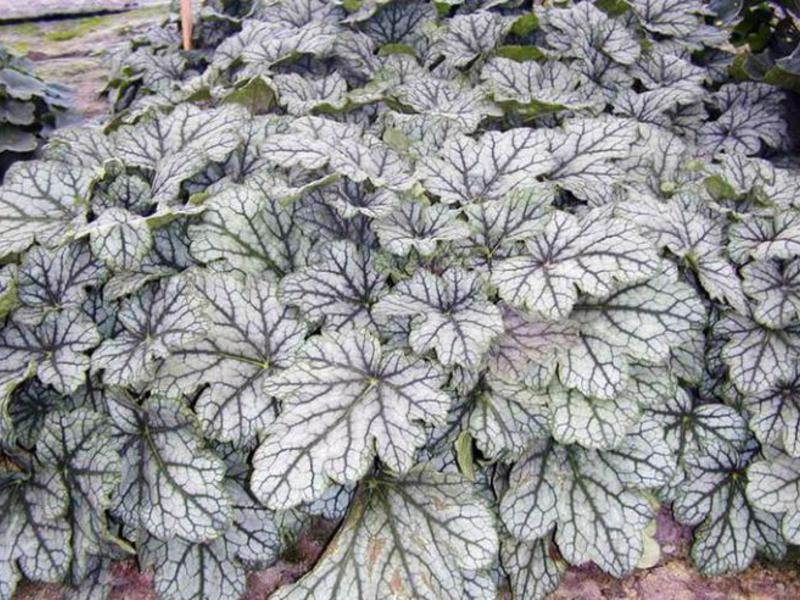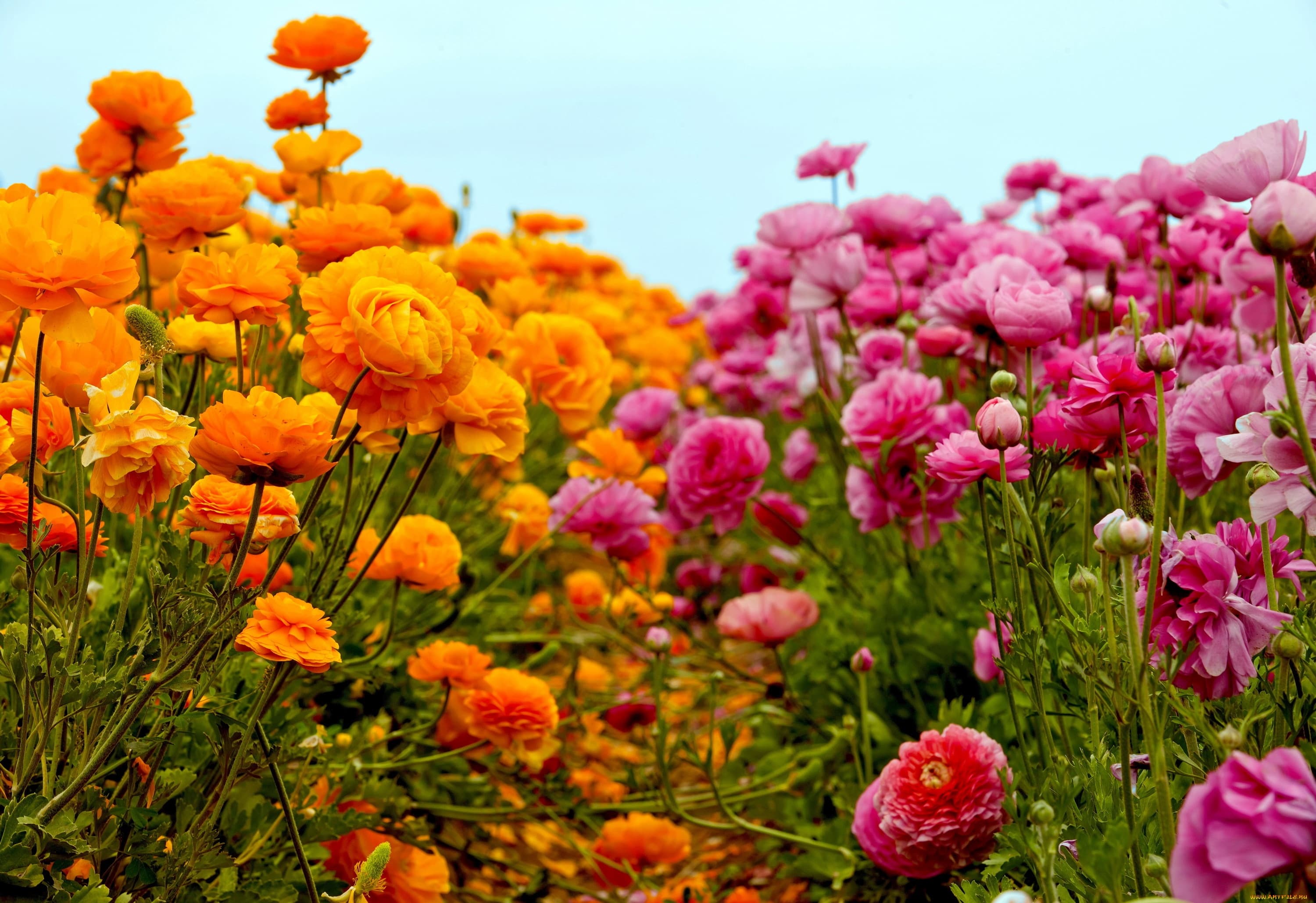Do not give up the idea of growing Heuchera outdoors. If you have at least minimal experience in the field of floriculture, then you can easily cope with this task. In many ways, success in this matter depends on the correct choice of location.
Today there are many varieties of Heuchera that thrive even in the mountainous regions of North America. What can we say about our climatic zone, if even rocky soil is a perfectly suitable place for growing this plant. The presence of geychera on the site can significantly transform any landscape design, because its decorative properties will add variety to the design of a suburban area.
Content
Description of geychera: varieties and varieties
 It's time to get to know this little-known plant for many domestic gardeners. Geichera refers to the family of evergreen mof perennial plants, which in adulthood reach a height of 40-60 cm. The stem is covered with rounded, medium-sized leaves, which are located on long petioles. They begin at the very root, forming a rosette together. The plant enters the flowering phase at the end of May, and this action continues until autumn. The flowers have the appearance of a panicle, the length of which is 20 cm. With the end of flowering, capsule fruits containing seeds are formed.
It's time to get to know this little-known plant for many domestic gardeners. Geichera refers to the family of evergreen mof perennial plants, which in adulthood reach a height of 40-60 cm. The stem is covered with rounded, medium-sized leaves, which are located on long petioles. They begin at the very root, forming a rosette together. The plant enters the flowering phase at the end of May, and this action continues until autumn. The flowers have the appearance of a panicle, the length of which is 20 cm. With the end of flowering, capsule fruits containing seeds are formed.
The whole variety of Heuchera varieties can be imagined in the form of two main groups:
- Decorative deciduous;
- Decorative blooming.
Its foliage provides decorative properties. It is difficult to find another similar plant that would provide for so many different color palettes and leaf textures. The flowers do not look as impressive as the leaves, but in some varieties it is the inflorescences that are the main detail that makes them attractive. In such varieties of Heuchera, flowers and leaves form a contrasting composition.
The Heuchera family includes about 400 varietiesthat differ in different shades. Therefore, among them, each florist can find plants that will successfully fit into the landscape design of his site.
Among the varieties known today, the most popular are cylindrical heuchera, American blood-red.
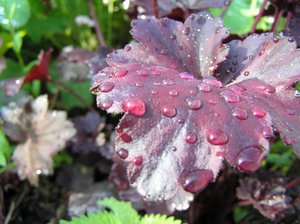 Geykhera is blood-red. It has denser leaves compared to other types of plants. Due to the fact that this variety is often used in decoration, it served as the basis for the creation of new varieties. During the season, forms flowers in the form of bells, the color can vary from red to pink. The flowering time lasts from June to August. It is very easy to care for this variety, and although it tolerates periods of drought, it does better in the shade. The most popular plants are such varieties as Monet, Hercules, Robusta.
Geykhera is blood-red. It has denser leaves compared to other types of plants. Due to the fact that this variety is often used in decoration, it served as the basis for the creation of new varieties. During the season, forms flowers in the form of bells, the color can vary from red to pink. The flowering time lasts from June to August. It is very easy to care for this variety, and although it tolerates periods of drought, it does better in the shade. The most popular plants are such varieties as Monet, Hercules, Robusta.- American Geichera. The plant has rounded leaves, flowers are yellow-green in color. A feature of the variety is a wide color palette of foliage, provides for many different shades and borders.It looks most impressive in spring and autumn, when the leaves acquire a pronounced shade. It looks paler in the summer months.
- Heuchera is cylindrical. It stands out against the background of other plants in larger sizes. It thrives best in lit areas, and can also be grown in partial shade conditions. Forms cylindrical flowers that can be green, coral or red in color. The characteristic shade of the leaves is green.
- Heuchera small-flowered. Among the representatives of this group, the variety "Purple Castle" is the most popular. As the name suggests, its main feature is rich purple leaves, which are complemented by a metallic sheen. It tolerates well not only periods of drought, but also frost. It is not difficult to care for this variety. It can winter well without damaging the foliage.
Planting a plant
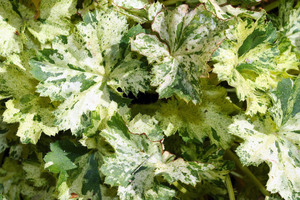 First of all, the owner needs to decide on a suitable landing site and prepare the ground... The plant feels great with many perennials, does not have a depressing effect on them. Therefore, heuchera can be combined with other types of plants or arrange a flower garden, forming it from different varieties of heuchera.
First of all, the owner needs to decide on a suitable landing site and prepare the ground... The plant feels great with many perennials, does not have a depressing effect on them. Therefore, heuchera can be combined with other types of plants or arrange a flower garden, forming it from different varieties of heuchera.
Heuchera grows best on light and nutritious soils, where there is no stagnant water. It is not recommended to choose areas with acidic soil for planting. At the stage of soil preparation, a small amount of coarse river sand or pebbles is required. Planting is best in May. It is recommended to arrange seedlings at a distance of 20-25 cm from each other. Throughout the season, it is necessary to ensure that the soil remains moist, but it is necessary to avoid excess of it. Otherwise, it will lead to the death of the plant. In open ground, different methods of planting a plant are used: using seeds, cuttings or a rosette taken from an adult bush.
Geyhera care
A photo of a plant can make anyone want to plant such beauty on their site. And I must say this task for everyone... It is quite easy to care for a Heuchera, since it does not require much attention to itself. Although it still provides for certain requirements:
- diffused shadow;
- deep drainage;
- permeable soil.
You can enjoy the beautiful flowering of Heuchera planted from seeds if you choose a place for it in the shade of trees or in partial shade, since the morning light is enough for it. The most illuminated areas are better suited for planting red-leaved Heuchera. As a result of exposure to sunlight, it will just acquire a characteristic red tint. If it is planted in the shade, then it is throughout the season will not change its green color... There are many varieties that adapt well to direct sunlight. The silvery mosaics that decorate the leaves begin to look brighter, the varieties that have purple leaves take on a darker shade.
A feature of Heuchera is that the roots are located near the surface. This requires the gardener to carry out activities that will help prevent the roots from drying out. The simplest and most effective way is mulching. Thanks to mulch, moisture will evaporate more slowly, and the soil will be well supplied with oxygen, and will also retain a loose structure thanks to underground inhabitants. Straw, sawdust, compost, gravel, foliage, etc. will perfectly cope with the role of mulch.
In the process of caring for heuchera, it is necessary to ensure the permeability of the soil, since with stagnant water, disease risk and death. For this reason, it is necessary to deal with the drainage device even before planting.
Over time, heuchera bushes begin to look less attractive, as the middle of the bush begins to be exposed.The rejuvenation of the bush can be carried out as follows: for this you need to dig out a heuchera bush, divide it into sockets, which are then seated in prepared places. It is best to do this in late summer, when the plants have faded, or in the spring, before the leaves have begun to bloom. Plants do not suffer from such an operation, therefore, after transplantation, they quickly take root.
In late autumn, the foliage begins to dry out, but you do not need to touch it, since it will provide protection to the plants during the winter when the cold hits. Only inflorescences with seeds can be removed, since heuchera after flowering do not look so attractive. Once harvested, the seeds can serve as material for planting new plants. Plants with light leaves, as well as newly planted bushes, are necessary before winter protect from cold with foliage.
Fertilizer and feeding of Heuchera
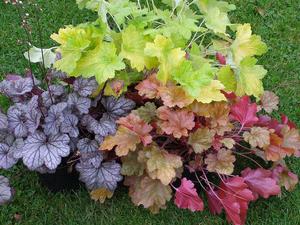 Initially, Heuchera was a wild plant that lived in the mountains, where the soil was not very fertile. The new varieties have little in common with their wild relatives, as they are provided with all the necessary nutrients. For this reason, fertilizing with mineral fertilizers is very rare. It is usually sufficient to apply fertilizer in the spring, at the time when planting is carried out. If you missed it, then this work can be done at the end of the growing season. For better assimilation, fertilization must be completed by watering the plantings.
Initially, Heuchera was a wild plant that lived in the mountains, where the soil was not very fertile. The new varieties have little in common with their wild relatives, as they are provided with all the necessary nutrients. For this reason, fertilizing with mineral fertilizers is very rare. It is usually sufficient to apply fertilizer in the spring, at the time when planting is carried out. If you missed it, then this work can be done at the end of the growing season. For better assimilation, fertilization must be completed by watering the plantings.
Plant propagation
If you want to increase the representation of Heuchera on your site, then the easiest way to do this is by dividing the bush... This method does not in any way impair the decorative properties of the variety. It is recommended to do this in early spring or autumn. To do this, you need to take the prepared plant and separate the outlet from it, which, when planting, is buried at a greater distance than for the mother plant.
Heuchera can also be propagated by cuttings. To do this, you need to prepare cuttings 4-6 cm long in the summer and bury them in a greenhouse. Usually, growing young bushes takes 3-4 weeks, after which you can transplant to a permanent place.
The seed propagation method is very time consuming and laborious. Therefore, this method of growing flowers is rarely used.
Diseases and pests
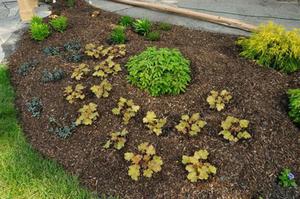 The advantage of the plant is that it is resistant to most diseases, the same applies to many pests. But there are cases when powdery mildew, rust, gray rot were found in certain varieties of Heuchera. This is usually facilitated by factors such as too frequent watering or insufficient drainage of the land. This leads to stagnation of moisture in the root zone, resulting in favorable conditions for the development of pathogens. When fertilizing in large quantities, the protective properties of plants are reduced.
The advantage of the plant is that it is resistant to most diseases, the same applies to many pests. But there are cases when powdery mildew, rust, gray rot were found in certain varieties of Heuchera. This is usually facilitated by factors such as too frequent watering or insufficient drainage of the land. This leads to stagnation of moisture in the root zone, resulting in favorable conditions for the development of pathogens. When fertilizing in large quantities, the protective properties of plants are reduced.
Conclusion
Geykhera is an exotic plant for our country, but many flower growers have learned how to grow it in the garden and at home. This is not difficult to do, since the plant is unpretentious. The main difficulties can arise only with the choice of a suitable place for this plant. You can grow these flowers from seeds, cuttings and rosettes... As for leaving, there are no problems with this, since heuchera is resistant to most diseases and pests.
